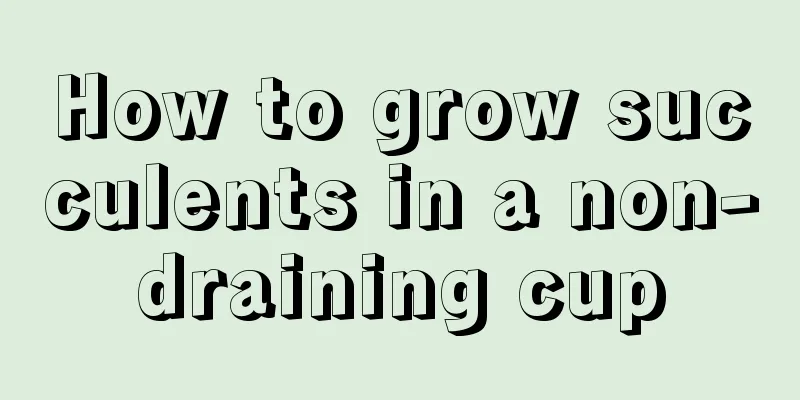How to grow succulents in a non-draining cup

1. Manual drillingIf the cup does not drain well, you can drill holes manually to increase its drainage capacity. However, not all cups can be punched with holes. Punching holes in glass or porcelain cups can easily cause them to crack, rendering them completely scrapped. 2. Cup bottom pad particlesIf the flower pot itself has poor drainage, you can put some larger particle media at the bottom, such as expanded clay, bricks, coal slag, etc. This will allow the water to sink to the bottom and prevent water from accumulating at the roots, thereby avoiding submerging the roots and causing them to rot. 3. Water lessIf you can't open a "circle", you can only reduce expenditure. Reduce your daily watering to only half the normal amount. This can prevent the roots from being submerged, and if there is water at the bottom, it will keep the soil in the pot moist, which will also help its growth. The watering interval should be longer, once every 1-2 weeks is enough. |
<<: What to do after the Dendrobium has finished blooming
>>: How to grow azalea in the north (home growing method)
Recommend
Does the Guanghongying Bougainvillea bloom frequently?
Bougainvillea pubescens is a very beautiful bouga...
How much leek yield per mu? How much profit can be made from planting leek per mu?
Leek yield per mu Leek is a vegetable that grows ...
How to grow potted jasmine well (how to grow jasmine bonsai well to make it bloom)
Jasmine is one of the most common potted flowers....
How to use Akadama
1. What is Akadama? Akadama is formed by the accu...
When and how to repot hydrangeas? Which month is best for repotting (notes)
Hydrangea repotting time The best time to repot h...
Where is it suitable to plant Atractylodes macrocephala
Atractylodes macrocephala planting area Generally...
Difference Between Sugar Snap Peas and Snow Peas
1. Plant Differences Sweet pea is an annual twini...
When is the best month to prune Chinese toon trees? How to prune and how to make them sprout more
Toona sinensis tree pruning time Toona sinensis i...
When and how to repot Kalanchoe
Changing pot time of Kalanchoe The Kalanchoe can ...
"Green ivy" likes to eat "garbage". If you feed it some rotten vegetable leaves, the leaves will grow wildly and become very lush!
Nitrogen Fertilizer Nitrogen fertilizer is the mo...
What flowers are suitable for growing in Quzhou? What are the city flowers and trees?
1. Climate characteristics of Quzhou Quzhou has a...
When is the best time to plant corn?
Corn planting time The best time to plant corn is...
Fuchsia's water requirements
1. Water requirements for soil culture 1. Waterin...
Top 10 most beautiful flowers
1. Lily Lily is a very beautiful and wonderful fl...
How to prune the bird's nest
1. Trimming tools Its branches are different from...









